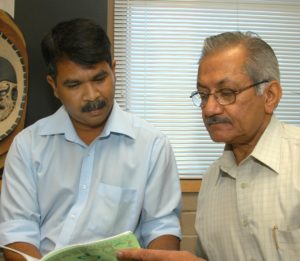
The effects of the COVID-19 pandemic on migration and other factors has led to a 1 million contraction in forecasts for Australia’s population over the next decade.
The Centre for Population‘s forecasts reveals the pandemic has had a substantial impact on the country’s population, mostly caused by a limit to overseas migration from border closures.
However, Flinders University demographer Associate Professor Gour Dasvarma says migration will continue to be the dominant factor of population growth in Australia in the foreseeable future.

Migration has been playing a dominant role in Australian population growth, he says, with net overseas migration (NOM) making up more than 50% of Australia’s population growth since December 2005.
“So far this pandemic effect appears to be a temporary blip. Our population growth will not go backwards but grow at a slower rate, with net migration slowly picking up in the next decade,” he says.
The return of overseas migration since the reopening of borders is already helping to offset the pandemic-led dip in forecasts, after a net outflow of migrants for the first time since World War II.
“Following the 2020-21 drop of 36%, caused mostly by the closure of international borders during the early stages of the pandemic, net international migration has resumed its dominant positive contribution to Australia’s population growth. with 54% in June 2022,” says Associate Professor Dasvarma.
“Interstate migration and NOM also have been playing dominant roles in the growth of the state and territory populations, with NOM also playing a role in augmenting Australia’s working age population and its labour force.”
He says there appears to be a general perception that Australia’s population will become “smaller and older” with the population getting older (with 10% or more aged 65 years and above since the early 1980s).
“The truth is that although the ageing process might have been slightly accelerated due to falling fertility, increasing life expectancy and particularly reduced migration in the wake of COVID-19, the population has been growing as the 2022 figures show.
“It will be smaller only when compared to population projections.”







